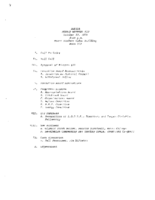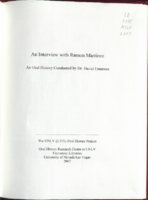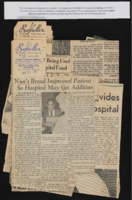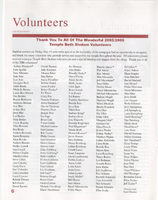Search the Special Collections and Archives Portal
Search Results

Press release and biography for Nat King Cole, November 1964
Date
Archival Collection
Description
Press manual for Nat King Cole, from McFadden, Strauss, Eddy, Irwin & Goodman Public Relations. The document gives a biography of the performer.
Text

Meeting minutes for Consolidated Student Senate, University of Nevada, Las Vegas, October 23, 1979
Date
Archival Collection
Description
Text
Domingo Cambeiro Corporation Architectural Records
Identifier
Abstract
The Domingo Cambeiro Corporation Architectural Records contain renderings and presentation boards depicting schools, commercial properties, public facilities, and government buildings throughout Las Vegas, Nevada between 1979 to 2010. The collection also includes architectural drawings of the Thomas & Mack Center on the campus of the University of Nevada, Las Vegas.
Archival Collection
Morgan Sweeney Photograph Collection
Identifier
Abstract
The Morgan Sweeney Photograph Collection (approximately 1922-1969) consists of black-and-white photographic prints of Boulder City, Nevada, and Lake Mead and Hoover Dam areas, located on the border between Arizona and Nevada. The images depict the interior, exterior, and construction stages of Hoover Dam (Boulder Dam). There is also an aerial photograph of Boulder City, Nevada.
Archival Collection

Transcript of interview with Carol Harter by Suzanne Becker, April 20, 2007
Date
Archival Collection
Description
Carol Harter and her husband of 46 years started their married lives by running away from college in their sophomore year. They spent the 60's working toward their degrees. Carol earned her bachelor's in 1964 and her master's in 1967. One of her professors encouraged her to go for her PhD at a time when women simply did not aspire to such heights. Dr. Harter completed her PhD in 1970, and because her husband wanted to work on his doctorate, they moved to Athens, Ohio. She taught at Ohio University while he completed his courses. They lived and worked and raised their children there for 19 years. Carol held the positions of ombudsman (2 years), vice president and dean of students combined (6 years), and vice president at the university, and then accepted the position of president at SUNY Geneseo (in New York). Carol was nominated for the presidency at UNLV in 1994, and she accepted the job in 1995. Her career here has been phenomenal, as she saw the potential of this very young university and set about bringing in the faculty, the funding, the buildings, and the vision to create a first-rate research oriented facility. During her administration, the new library went up, the law school and dental school were built, and over 550 million in gifts and pledges were raised. This includes money raised for the "Invent the Future" campaign. Under Dr. Harter's guidance, women's sports were expanded, multiple graduate degrees were developed, more money for research and buildings was raised, and UNLV has become a major research university. Dr. Harter leaves behind a rich legacy, including her vision of the UNLV Midtown project, a cultural district where the university may one day interface with the community.
Text

Transcript of interview with Ramon Martinez by Dr. David Emerson, April 24, 2006
Date
Archival Collection
Description
Text

Newspaper clippings about The Angelita Bread Foundation
Date
Archival Collection
Description
Series XIII. Tournaments
Mixed Content

Transcript of interview with Oliver Crickman by William Hawley, March 3, 1979
Date
Archival Collection
Description
On March 3, 1979, William Hawley interviewed Oliver Crickman (born 1933 in Apex, North Carolina) about his experiences from living in Nevada and working in restaurants. Crickman first describes his background and his first occupations prior to starting as a cook in Las Vegas restaurants. He then explains how he gradually moved from the position of cook’s helper to sous chef and his then-current position of executive chef at the Royal Inn. Crickman goes into detail about the operation of those restaurants and other Las Vegas Strip and Downtown Las Vegas properties, and he describes the demographics of cooks as well as how the hospitality industry has changed over time. The latter part of the interview involves a discussion of Crickman’s various residences in Las Vegas over time, the extent of crime, the first places to shop, and a brief discussion on mobile homes.
Text


